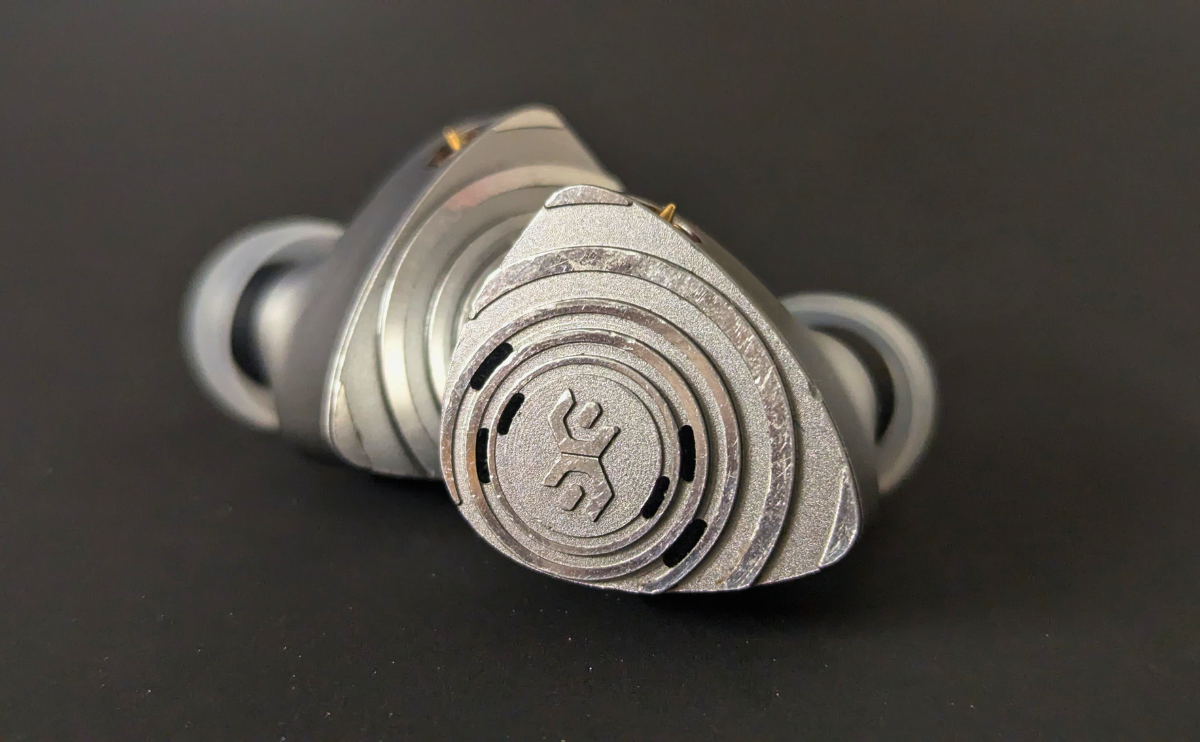Elysian is a well-established IEM brand that focuses on the higher end of the budget spectrum in the IEM market. This is their intro to the mid-fi segment and oh boy! I am so happy that they chose to enter into this field also, where a huge competition is already waiting to devour any IEM that doesn't match the value proposition even the tiniest bit. And Elysian not only scored well in that race, but I would say it might’ve won it too. Let’s dive in.
Introduction to the sound
Pilgrim is not the kind of IEM that will impress you with cheap tricks. The fundamentals are excellent on this IEM. Although not everything is perfect, it has flaws in two places and I will be discussing that later on. But I think if it hits the right spot for you, it has the potential to be an all-rounder IEM that would serve you well in every genre.
Philosophy Towards Tuning
The intention towards the tuning reminds me a lot of the Sennheiser HD6X0 Series. They did the primary tuning very well, which doesn’t only impress you with refinement but can also challenge IEMs that are much more pricier. Simply put, if you love music for the art in it (Composition and Orchestration) rather than enchanting factors like huge stage depth and sparkly details, you will be delighted with this IEM. The majority of the genres sounded good. Where recorded music shines in this IEM, Electronic music still needs a little bit more oomph. Personally, it worked extremely well for my library. But if you have a very electronic music-heavy collection, it won’t give you a satisfying low-end. The sound is organic, beautifully coherent and wet while being refined through and through.
Simply put, Pilgrim can’t do everything well. But for sure it doesn’t sound like a $399 IEM but a lot more than that. The value you will get from this IEM is astronomically high.

Tuning in detail
Subbass ( A lot better than I expected )
- Rumble is there in this region
- It feels authoritative
- The extension is deep
- Separation is excellent in this region
- The sub-bass is not room-filling (The immersion factor is missing a bit)
- Doesn't sound like a subwoofer is in the action (Cohesive but not defused)
- Amplitude is tasteful as a neutrally tuned IEM
- Decay and Attack is extremely neutral and feels analogue
- Falloff to the midbass is very natural and gradual
Mid-Bass (A slight departure from the excellent sub-bass)
- The transition is very smooth from the sub-bass
- Mid-bass is not thumpy to my ears
- The amplitude of the overall midbass is also not very high
- The transition to midrange is very neutral and doesn’t give husky characteristics to the male vocals nor it will make it lush.
- Overall the low-end seems very natural and slightly hints at a more reference-grade tuning
- Compared to the sub-bass, the midbass is a bit underwhelming in presentation and resolution both
- The attack is a bit slow
- Decay is extremely well implemented. It is as natural as it can get at this price point.
- The bass depends heavily on the music. If the music has sufficient bass it will reproduce properly enough.
- Again, the overall bass performance is extremely tasteful
Let me explain the low end of this IEM using a few songs from my library
(For reference the song “We All Have Dreams” - doesn’t produce enough oomph with this IEM but the sub-bass is good enough. The song “Personal” also left me a bit desiring with the bass performance. In the song “Reconssiance” this IEM performed so well that most of the gripe I had with the midbass vanished. The song “Anthology - Daft Punk Tribute”, made me question what I said about the mid-bass, it sounded very full and thumpy. So it is clear that it is highly dependent upon the tracks you’re listening to, but the points above apply to most genres I listened to).
Lower Mids (The whitepaper reference)
- Lower mids are very neutral
- Vocals and Instruments are aptly textured. It doesn’t sound hyper-textured (Like Tangzhu GATE) but never felt it was lacking by any means.
- The resolution is good enough for the price and so are the details (micro contrasts & micro details)
- The bass causes no bleed to the mids whatsoever.
- Timbre in this region is very enriched (The production of every instrument is more appealing ), which is a delight to listen to if you are not chasing absolute realism in timbre.
- This range is extremely dynamic.
- Zero Dryness & roughness can be noticed here. The vocals sound great.
- The vocals do sound intimate rather than having a spacious presentation although it is not as heady as I thought.
Upper Mids (Sparkle Where ?)
- The upper mids are not sibilant even a tiny bit.
- The whole range is controlled through and through
- Although I craved a little bit of elevation in this range.
- No sudden peaks and dips are there that can result in unevenness
- The resolution is perfect here, the texturing to micro details everything is very good in this range.
- Some air extension can be felt but it is not sufficient for my ears to call it a fulfilling female vocal reproduction.
- 4Khz needs to be EQed to sound exciting
- Very realistic timbre.
Treble ( OK so you have to choose one pill - comfort or elevation )
- The treble is very safe for every song I have thrown at this IEM.
- The treble contributes to a wetness to the sound which I adore.
- Very refined and controlled throughout the range.
- The resolution is very organic, no sudden peaks cause unnatural detail exaggeration which contributes to the unevenness in the music.
- Although I would’ve liked a bit more elevation in this region. The transience could’ve been a little bit crisper at the end.
- Note Falloffs are a bit blurred too which also contributes to the wetness. But I don’t find it bothering me enough.
- Timber is a bit weighted, few instruments lacked the presence region refinement.
- The resolution is OK for the price here.
- I kept craving for trailing edges since every nuance matters to me.
- The attack and bite are a bit missing, which contributes to the smoothing out of string instruments in micro-contrast.
- Overall, the treble is extremely useful for longer listening sessions. I used it for hours at a stretch and didn’t feel fatigued even a tiny bit which is a huge win.
Simply saying, Pilgrim sounds like a much higher-priced set. With a few changes here and there in EQ, you can live with this IEM without worrying about an upgrade, for a long time. I guess the experience talks here, Elysian haven’t backed out a single bit to give this IEM a lot of care as they do with their much pricier IEMs.

Technicalities
Sound Stage (OK! IEM Version of HD650)
The soundstage of this IEM is intimate but it is far from being claustrophobic. Some might express it as a heady IEM which I don't agree upon. The soundstage though is well applied in all directions. No stretching of any sort, to give it a Stereo Imaging benefit, nor does it shy away from producing height. This IEM won’t wow you with a huge stage but the utilisation is very strong for the minimal scope it acquires.
Imaging (Damn! They've outdone themselves here)
The imaging on this IEM is exceptional, to say the least. Not only I could pinpoint every instrument in the soundstage but also the border around their sound projection could be felt. There was space between instruments even on the busiest tracks.
Now comes the part that blew me away. The layering of this IEM is insane for the price. You can hear layers upon layers within the soundstage of this IEM. I can easily compare it to a $1000 IEM and it might still beat most of them in terms of layering capabilities only. For this reason, Binaural Recordings sound superb with this IEM.
Dynamics
I have zero complaints about the dynamics. It handles everything well. It felt very analogue and I loved that since dynamics like IE600 is arguably better but I would much prefer the sound of this IEM in terms of Dynamics.
Resolution
Now IEMs have gotten so good with resolution that it is hard to complain. The resolution likewise is very good with this IEM. It might seem a bit under-detailed due to psychoacoustics for the treble tuning but it is very resolving.

Comparison
Softears Studio 4 - They might look similar in the FR but they sound a bit different. Whereas S4 is very neutral in the sense that it is flat. Pilgrim is not as reference grade as studio 4. The soundstage on S4 is a bit better but Imaging and layering are better on Pilgrim. Subass is way better in Pilgrim whereas S4 will give you a thump in the mid-bass.
I would choose S4 if I aim to listen to music from an analytical perspective. Otherwise, Pilgrim is a more richer and luxurious way to listen to music.
AFUL Performer 8 - Again, they are very different. P8 is massively better in providing sparkle and air. Where Pilgrim beats Performer 8 in the bass. Staging of P8 is a hint better and on the other side layering of Pilgrim is better.
Project Dita M - Pilgrim is a lot more expensive than Project M and likewise it is an upgrade in all aspects, so if you have the extra bit of cash in your wallet, go for it.
IE600 - These two are complementary sets. IE600 sounds wider and has better separation, air, and it is loaded with sparkles. Where Pilgrim is a much more mature set.
Conclusion
I wholeheartedly recommend this IEM at $399. Pilgrim is a mature, well-refined and well-tuned set with exceptional layering capabilities which will be the benchmark for me at this price point from now on.
Disclaimer:
The following review has been thoughtfully crafted by Mr. Arghadeep Misra from Kolkata, a cherished supporter, customer, and friend of The Audio Store. We express our gratitude to Mr. Arghadeep for generously sharing his personal insights into the Elysian Acoustic Labs PILGRIM. It is important to note that this review is entirely unbiased, reflecting Mr.Arghadeep's genuine experiences and preferences. No benefits or exchanges have influenced the content of this review. His valuable contributions significantly enhance our blog, and we sincerely appreciate his unwavering dedication to the audio enthusiast community.




















